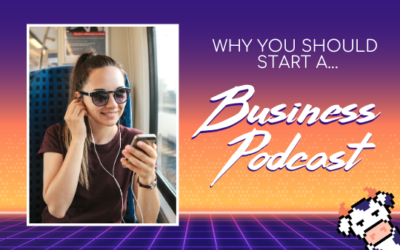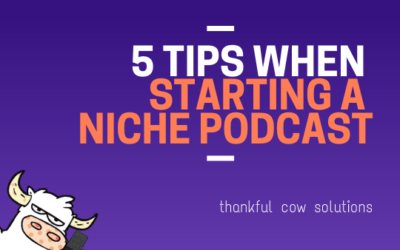Deciding how much to charge for anything, let alone blog writing, can be a freelancer’s nightmare. Honestly, it’s a difficult decision to make. You don’t want to price yourself out of a highly competitive market, but on the reverse of that, you don’t want to undersell your services – this often leads to resentment and feeling like you’re being taken advantage of.
I think determining your pricing structure for blog writing is more difficult than a lot of other freelance work. How can you put a price tag on your words? Will other people deem your work acceptable enough to pay it? If they don’t pay what you want, does that mean they can’t afford you or are you just not good enough?
Oof, the imposter syndrome around blog writing is REAL, my friends.
When I first started writing blogs professionally, I was paid abysmally at a rate of $40 for an 800-1000 word post. It worked out about 5 cents a word. This was definitely way too low a rate for a quality blog post with research and SEO keyword weaving. I felt trapped, though, and at least I was getting consistent work, right? But that’s another story for another day.
Pricing Structures for Blog Writing
There are a few different pricing structures used for blog writing. I’m detailing out the pros and cons of these below:
Per Hour
If you’re charging by the hour, do you only get paid while you’re actually writing? What about the time you spend thinking. Don’t even get me started on Upwork’s native time tracker that actually takes screenshots of your work to “prove” that you’re working 🙄
But hourly can work for some people, especially when you’re starting out in this industry. Charging by the hour gives you a great sense of how long it actually takes you to do the work.
If you’re not sure how to even figure out your hourly rate, don’t worry! Digital Nomad Kit has a great, and free, Pricing Calculator resource that is literally plug and play. You input your personal values and it spits out a minimum hourly rate. Go forth and play!
Per Word
It’s a bit better if you’re charging by the word. But again, making sure that your rate actually equals something you can live on. So many content mills are super guilty of offering less than 5 cents per word which is simply not enough.
When you charge per word, you create a pricing structure that works for you. There’s nothing uncertain, this way. You write 786 words, you get paid for 786 words.
If you’re just starting out writing professionally, I want you to know that you do deserve to be paid well. Aim for a per word price you’re comfortable with and don’t pitch below 13.5 cents per word (works out at $100 for a 750-word blog). This is on the low end, but you can make it work.
Upwards of this? The world is your oyster, my friend – charge what you believe your writing is worth. There is no limit and some writers charge $1 and more per word.
Package Pricing for Blog Writing
My preferred pricing method is using a package. This is where you create a rate per blog post, what else it includes (detailed below), and know roughly how long it will take you.
My package rate is roughly 5 hours of work, though I often don’t use that full 5 hours. Remember that you’re being paid not only for your time writing, but your time thinking, and your years of experience in this industry.
You can structure your package rate however feels comfortable to you. The more specific and skilled services you include in your package, the higher you can charge, too. Saying that, please also know that you don’t need to include anything you don’t want to, feel comfortable with, or know if you don’t want to.
CHARGE WHAT YOU BELIEVE YOU ARE WORTH!
What to Consider When Making Your Blog Writing Packages
When you’re offering blog writing as a service to other people, you can include more than just the actual writing of the blog. And, of course, the more you include in your package (hour or word, too), the more you can charge. If you’re charging by the hour, make sure you charge for these additions, and if you choose to charge by the word, work whatever else you’re including into your price.
Content Calendar
You can take a larger role in your client’s content marketing by being involved in the actual planning process. Whether you’re leading the charge here or part of the team, as this is more of a project management role, please charge more for it or consider making it an optional add-on to your existing package.
Planning a content calendar includes sitting with your client to decide what topics you’ll write about each month, when your blogs will release, what tools you’ll use for marketing and promotion, what keywords to target, and often even more than this.
It’s important to include a mix of evergreen content (so content that rarely goes “out of date” and always has relevant information) and hot topics.
Content Repurposing
Content repurposing is using what you’ve written in the blog to make other types of media.
Commonly:
- Social media graphics for feed & story
- Infographics
- Tips & Newsletters
- Podcasts
- Reposting
- eBooks
- Video series
Edits
You need to explicit with how many edits you offer in your package and what you include in an edit. I like to include a structure with one major edit and two minor, but however you offer this, it’s the clarity here that makes it. Clients can and will send your work back to you over and over again, so having that limit and clarity is vital.
Formatting
Formatting is an option for your package that includes adding the blog you’ve written to your client’s website. You need to decide if your package will include:
- Uploading to your client’s website
- Embedding links
- Image research (for within the blog itself)
- Featured image creation
- Social media share images
- Scheduling the post
Length of the Blog Post
It’s important to be clear how long your blog will be. The average length of a blog post is 750-1000 words, though you can choose to offer shorter blogs (300-500 words) and longer ones (1000+ words). Adjust your prices accordingly here – charge slightly less for shorter posts and more as you add words.
Remember that longer blog posts can often be turned into well-researched and in-depth articles and guides and these will have a higher price tag.
Research
Most blogs include some amount of research, especially if you’re not familiar with the topic. Research time doesn’t come out of your writing time, so if you have to do research outside your baseline knowledge, make sure you factor this into your price as well.
Some clients will also want you to include and cite your research, so make sure you include a list of sources you’ve used. You don’t usually need to go full ALA or MLA style here (unless your client specifically wants this!) but it’s smart to know where your article sources come from.
Search Engine Optimisation
Search Engine Optimisation (SEO) is a high-level skill in and of itself. Because it’s a specialist skill, you can charge more for it. SEO helps websites rank and be found on internet searches and it’s very important. Brands pay lots of money to rank highly!
Keyword Research: This is highly specialised and researched. Many copywriters solely focus on keyword research and leave the writing to other writers! If you’re including this in your offer, please make sure you know what you’re at with it and have used a keyword research tool before. I’d recommend taking Ahrefs free Blogging for Business course if you’re completely unfamiliar but ready to learn.
SEO Keyword Weaving: Not quite as specialised a skill, but still one I’d recommend learning. Keyword weaving is when you already have a list of keywords the blog you’re writing for ranks, or wants to rank for, on search engines. You’ll use these keywords throughout your blog post but in a natural way. It can read robotically if you’re filling them in willy nilly. I’d recommend using the Yoast SEO plugin if/when you’re uploading the blog to WordPress, especially when you’re first getting used to SEO keyword weaving.
Social Media
Some clients love when you write a few different social media captions for sharing the new blog post. This is an easy upsell to include in your packages. You’ll also want to decide whether you or your client is sharing on social media, if you’re using a scheduling tool (like Buffer or Hootsuite), and where you’re sourcing the share image from.
You can also include newsletter copy and creation here. This is the actual writing of your client’s newsletter update announcing the new blog post. You might write the newsletter copy only or you might add it into their email marketing service and schedule it.
Blog Writing Next Steps
Once you decide how much you include in your package for one blog post, decide your price point. For me, personally, I don’t charge less than 5 hours time, and that’s just for writing and light research. Remember to factor in “thinking time,” too. And that’s your price for one blog.
If you’re creating a monthly retainer with, say, four blogs a month (or once a week), you can either take how much you charge for one blog and x 4 and have that be it. Or you can decide to reduce the price for ongoing retainer packages. That’s entirely your call and what you feel comfortable with.
I hope you found this helpful! If you’re interested in hiring me to write for you, please check out my blog writing packages and book a free discovery call!
Amanda Sloan is a Content Writer at Thankful Cow Solutions, Tarot Reader, and co-host of Geek Herring. She’s a lover of geek feminism, podcasting, gaming, food, and wellness. You’ll find her talking and writing about feminist discourse, all things geeky, vegan food and nutrition, podcasting, travel, and positive mindset.
Call The Cow to find out how we can help YOU move forward with virtual assistance, content, or copywriting 🐮



0 Comments